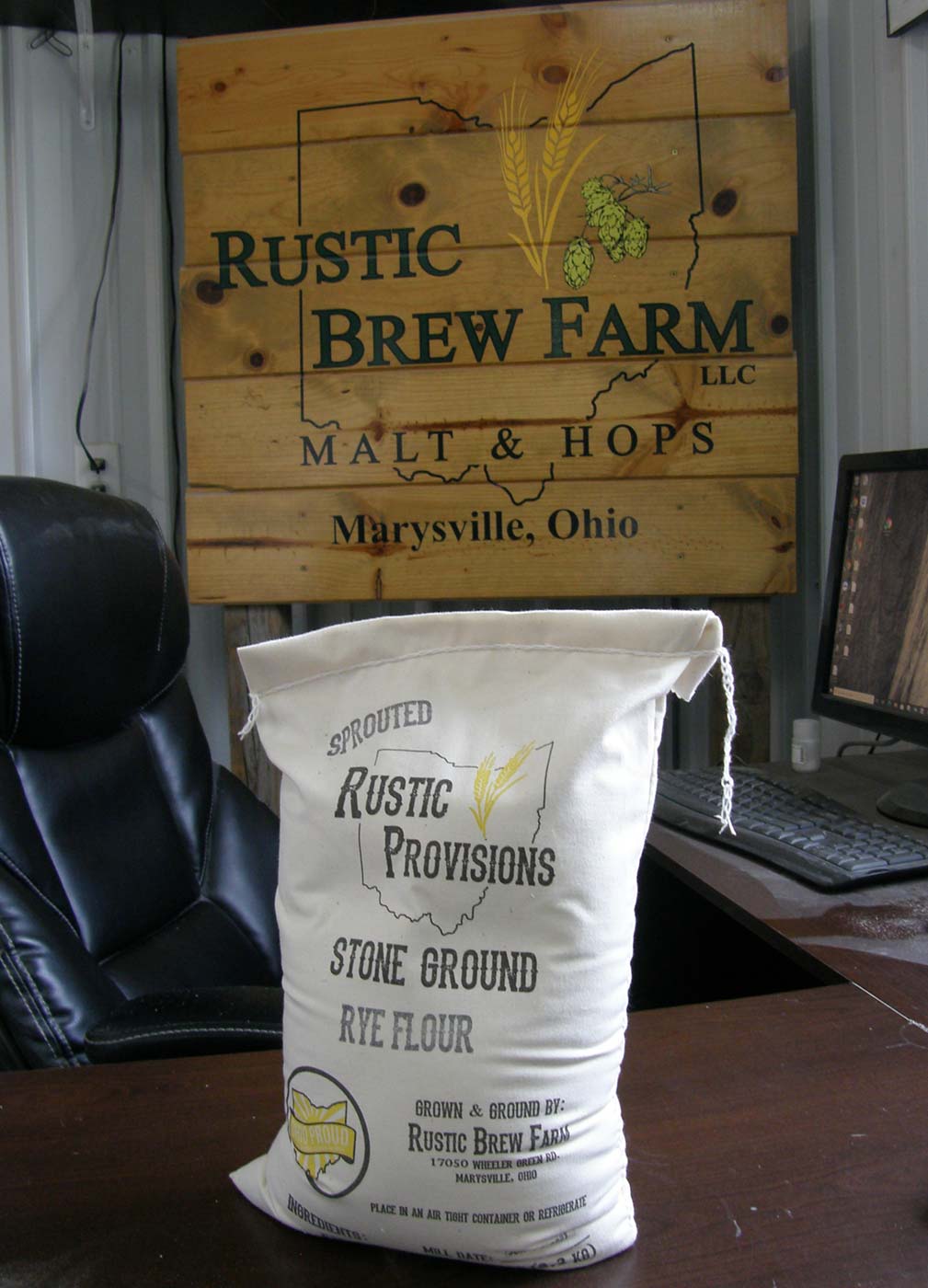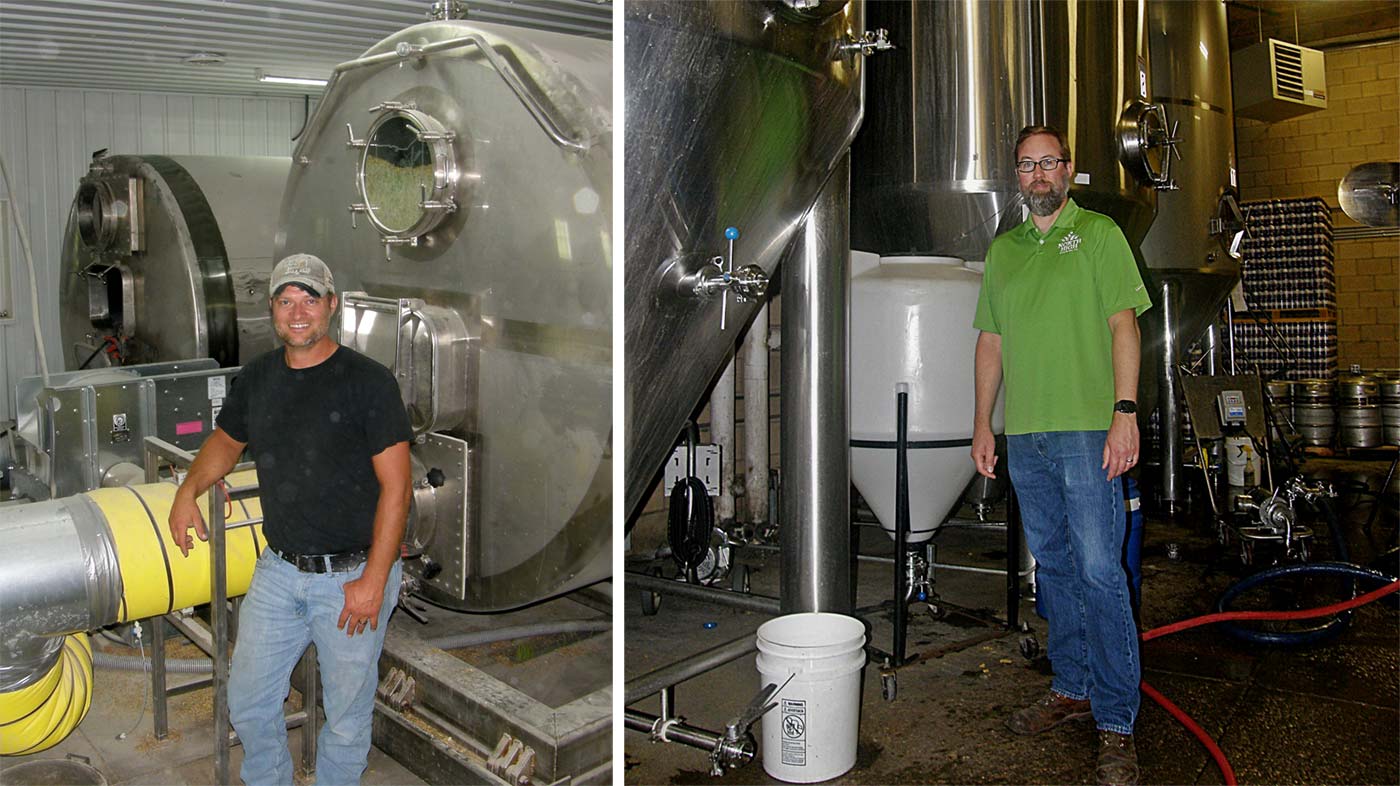Think brewing is all about hops? Think a grain
Pity the poor little cereal grain. Barley barely registers with the crowds imbibing at Central Ohio craft breweries, while hops pop up in the punny names of brews and breweries across the land.
Despite what non-aficionados may think, hops are an added flavoring and preservative rather than a foundation of brewing. Meanwhile, the more significant ingredient of barley is in the name of a single local craft pub—Barley’s Brewing Co., one of the granddaddies. But the grain’s profile may be rising with the growth of two local enterprises that process Ohio-grown barley, wheat and rye for brewers and distillers.
Matt Cunningham came home to the Marysville area to farm with his father in 2009, a few years after graduating from Ohio State University, and he brought new ideas with him. While commodity prices for corn and soy are strong now, they are notoriously volatile. Cunningham wanted to seek new markets and diversify the crop rotation at the family's 2,600-acre Rustic Brew Farm. Barley for brewing seemed a good start.
“There’s a disconnect between the public and farms,” Cunningham says. He views his new crop diversity as a way not only to improve his soil, but also to strengthen a local economy that included a strong brewing scene. “It’s super rewarding to know your customers—and seeing their customers enjoying beer or spirits.” Cunningham has also added a small milling operation, producing flour from wheat, barley, rye and oats.
For the barley, Cunningham had to first study the crop and the malting process—and invest in huge drums to malt the grain. That’s another part of the Central Ohio brew world. Heritage Equipment in Plain City historically manufactured stainless-steel containers for farms and dairies. Today it also makes and sells them for local craft breweries. The company fabricated the containers Cunningham designed for his malt house.
Ryan Lang, co-founder of Middle West Spirits, is working along the same lines with Origin Malt, but at a scale large enough to serve craft brewers and distillers throughout Ohio and into surrounding states. Origin contracts with farmers (he calls them “seedsmen”) within 300 miles of Marysville. They collectively grew 15,000 acres of barley in 2019, and the acreage continues to increase.


(right) Matt Cunningham with his malt containers; (left) North High brewmaster Jason McKibben
That’s paltry compared to the 350,000 acres of barley in Ohio a century ago, before Prohibition. But it’s a big jump from the 500 acres being grown just five years ago. Ohio once had some of the nation’s largest malting facilities, and Columbus, Cincinnati and other cities were dotted with breweries much larger than micro. But by the time Prohibition was repealed in 1933, the state had lost not just the acreage and malt houses, but also the malting expertise. In the decades since then, high-quality brewing ingredients have tended to come from abroad. Malting migrated to Canada, and the Pacific Northwest became a haven for hops.
Then in 2016, Little Fish Brewing in Athens unveiled a session ale believed to be the first all-Ohio brew in over a century, using Rustic Brew’s first crop of malted barley and Ohio Valley Hops from the Cincinnati area.
That was three years after Lang began reaching out to seedsmen and other potential partners who would become part of Origin Malt—and one year before they began producing barley malt. Lang and partners do not have their own malting facility yet, but have a planned site in Marysville. For now, they ship barley from Ohio and nearby states for malting at a Canadian facility, and they send their own maltsters to do the processing. “It’s our customized material for our customers,” he says.
Lang’s seedsmen, like Cunningham, grow winter barley, a cover crop that is harvested in June, in time for the same fields to produce a second crop of soybeans. Thus, Cover Crop was an appropriate name for the blonde ale that North High Brewing Co. launched in partnership with the Ohio Farm Bureau Federation for its centennial in 2019.
North High Brewmaster Jason McKibben says the brew’s malt is half from Origin barley and half from Rustic. He also used hops from five different Ohio growers. Barley, as a cover crop, increases soil health and decreases nutrient runoff into waterways. McKibben says Ohio brewers use water from rivers and streams to make their beer.
“Cleaner water makes better beer,” he says. “And we can improve the water by growing the grain we need for brewing. It completes the circle.”
The winter barley has a thicker, tougher husk, which is a malting challenge. The grain has to absorb water, and then germination takes about a week (compared to four days for Upper Midwest and Plains states’ spring barley). But the thicker husks can make more flavorful malts, McKibben says. He also uses Rustic Brew malted wheat for North High’s Honey Wheat lager.
What does this mean for the unheralded status of barley? As a professor of chemistry and physics at Ohio State University, Pat Woodward might be interested in the “enzymatic conversion potential” of malted barley. But as the proprietor of Pat’s Pints, a long-running local-brewing blog, he’s focused on the beer.
Over the years, he says, “I’ve come to the conclusion that the base malt is the most important part of any beer. If craft lagers continue to rise in popularity, maybe there will be a day when consumers recognize the quality of the base malts. By the way, I think that the quality of local malts—Rustic Brew Farm’s, for example—is much higher than that of local hops.”
Find additional information about Rustic Brew Farm at rusticbrewfarm.com and about Origin Malt at originmalt.com.





